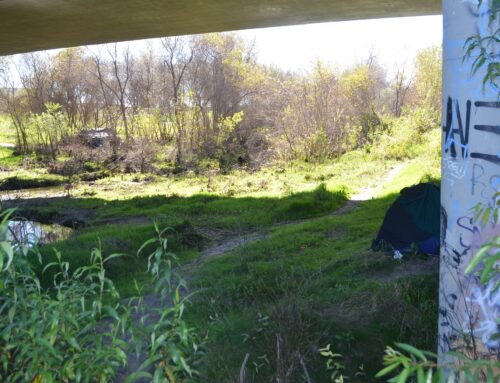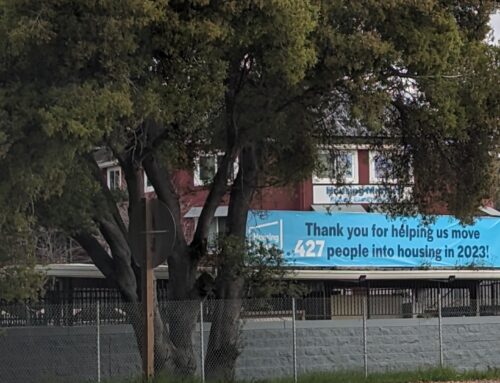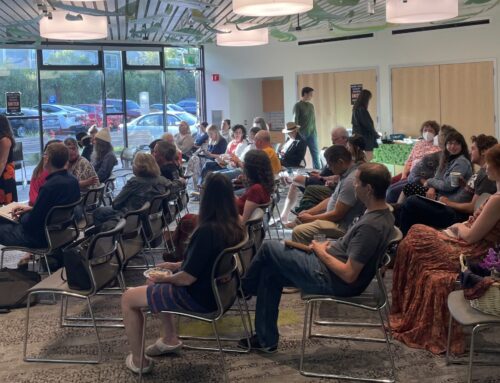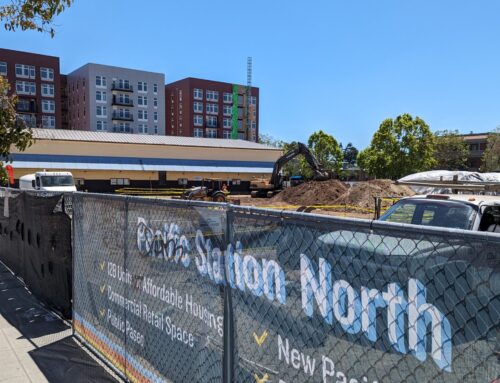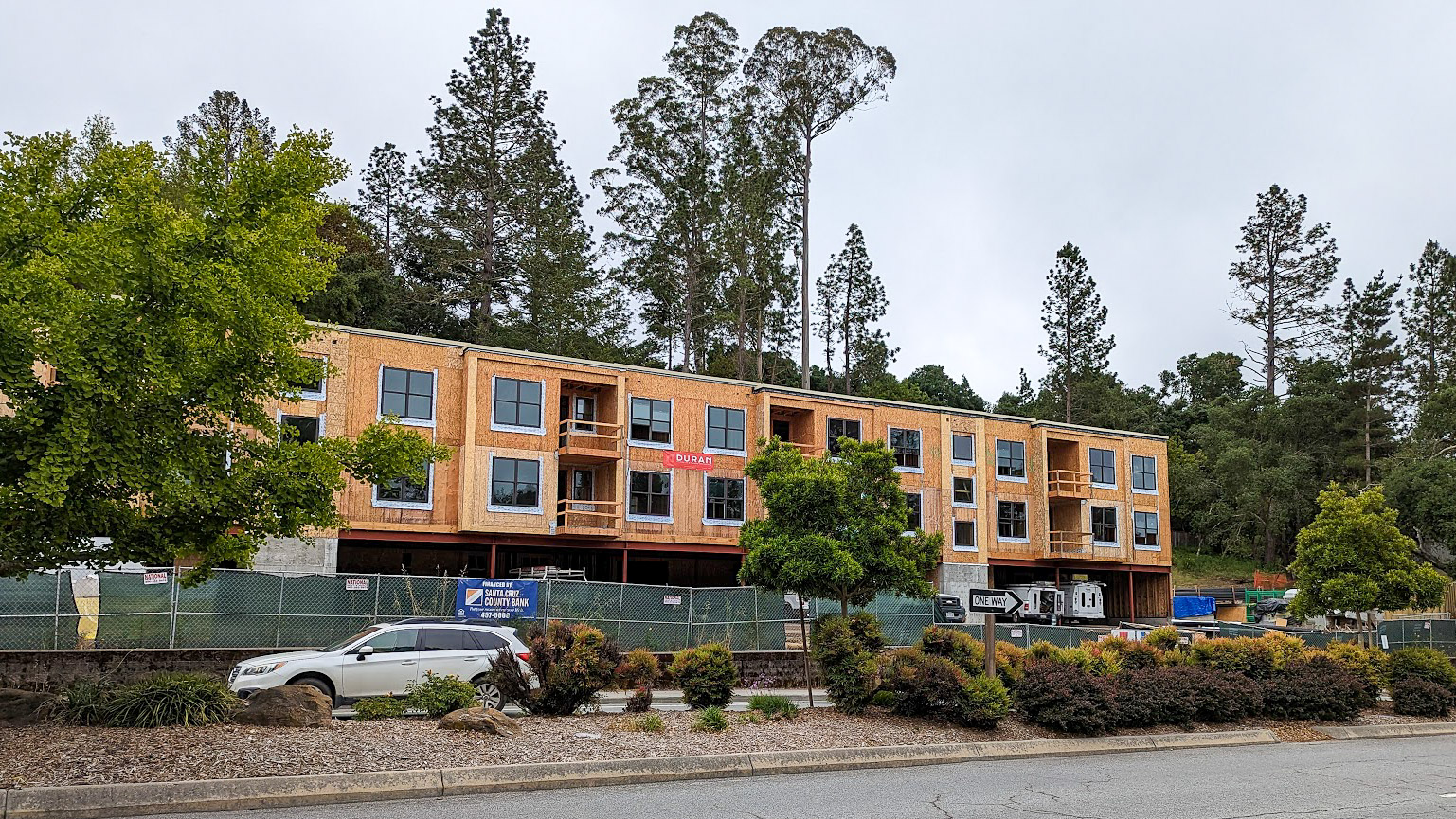
Construction continues on a 16-unit condominium project at 4104 Scotts Valley Drive in June. (Stephen Baxter — Santa Cruz Local)
SCOTTS VALLEY >> Scotts Valley leaders submitted plans to the state this week to allow for more than 2,000 new homes in the city over the next eight years, anchored by condos or apartments above shops on Scotts Valley Drive and Mount Hermon Road and a long-planned Town Center development near the Kings Village Shopping Center.
- To address the state’s housing shortage, California authorities require counties and cities like Scotts Valley to update part of their General Plan called the Housing Element every eight years.
- In a draft Housing Element that Scotts Valley city leaders submitted to state authorities July 5, city leaders mapped areas along Scotts Valley Drive and Mount Hermon Road where rezoning is planned to allow more housing.
Scotts Valley is required to plan for at least 1,220 new homes by Dec. 15, 2031. The new goal is nearly nine times higher than the previous unmet target. Housing advocates and the Santa Cruz County Civil Grand Jury in June criticized the city’s slow progress in building new affordable housing.
New housing plans
City leaders plan to zone for 2,151 new homes over the next eight years, according to a Draft Housing Element submitted to the California Dept. of Community development. Draft Housing Element presented at a June 28 joint meeting of the Scotts Valley City Council and Scotts Valley Planning Commission. The plan includes a state-recommended buffer above the 1,220 required homes.
About 40% of those are homes planned in areas that will be rezoned to allow denser housing and shops along Scotts Valley Drive and Mount Hermon Road, according to the draft Housing Element.
Zoning laws have required mixed-use projects in the area to be 50% commercial space. That requirement has hampered new development, said developer Bill Brooks, owner of Brooks Properties. Brooks said he wanted to develop the area behind Scotts Valley Liquors at 4790 Scotts Valley Drive.
“For years I was trying to do something there,” Brooks said. But the requirement for commercial use outpaced the market for retail or office space.
New rules included in Scotts Valley’s draft Housing Element submitted to the state would require 30% of new development to be commercial rather than 50% of it. Under the new guidelines, Brooks expects the project would be more economically viable, and could host a development of 50-60 apartments.
Some developers have said the 30% requirement is still too high.
“With that in there, none of these projects are going to go through,” said David Duquette, owner of an engineering firm, during a June 28 joint meeting of the Scotts Valley City Council and Scotts Valley Planning Commission. “It doesn’t pencil out.”
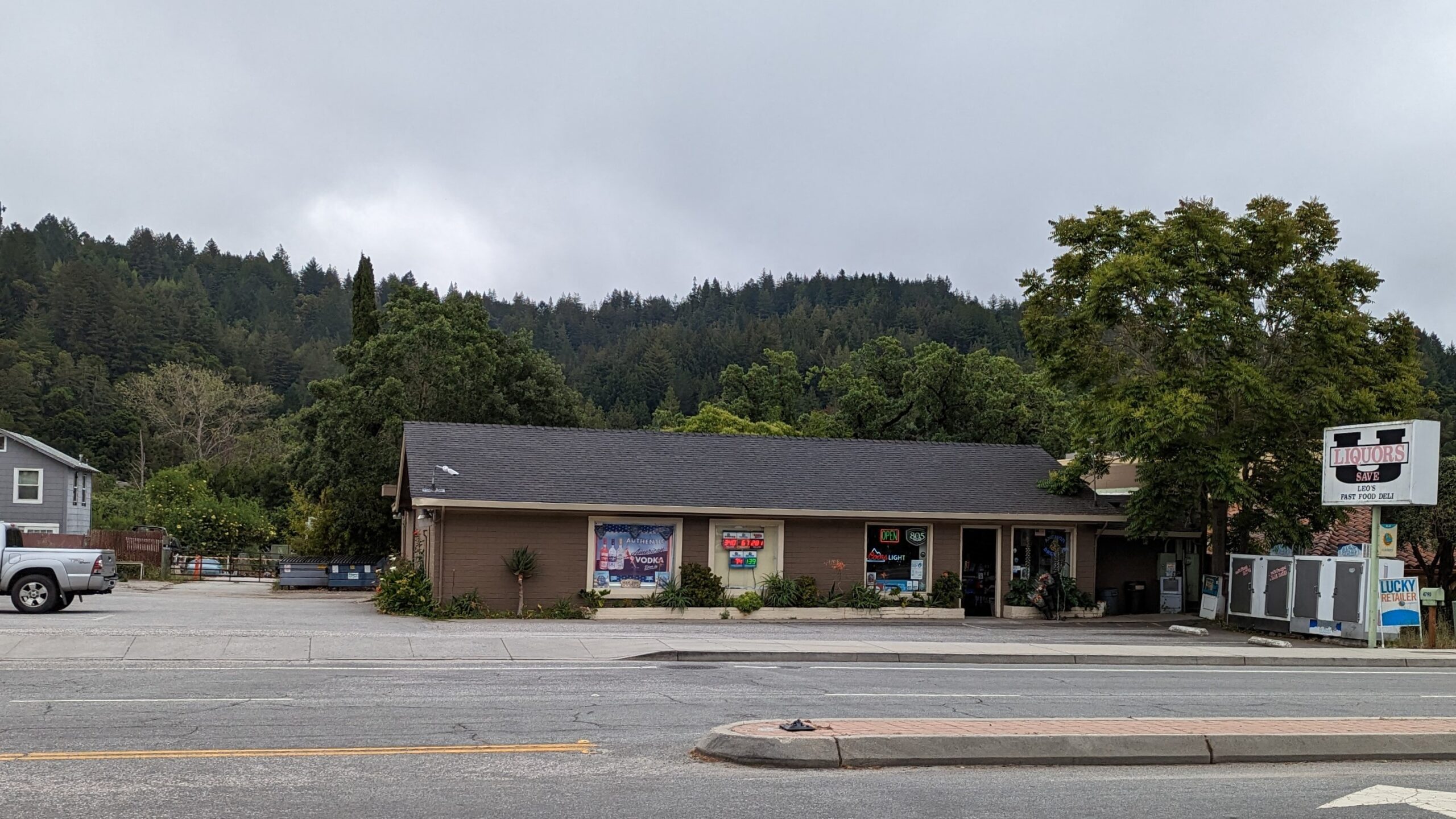
More than 50 apartments could be built behind Scotts Valley Liquors, also known as Leo’s U-Save Liquors, on the 4700 block of Scotts Valley Drive. (Stephen Baxter — Santa Cruz Local)
Scotts Valley should instead emulate the City of Santa Cruz, Duquette said, which often requires mixed-use developments to have commercial space on the ground floor.
That change will be considered for subsequent drafts, said Scotts Valley City Manager Mali LaGoe. “We’ll have at least one more draft after this one, and continue to be open to community feedback and input,” she said.
If the 30% commercial requirement is included in the final Housing Element, the city council could waive that requirement for individual projects, LaGoe said.
State housing requirements
When areas do not make adequate progress on their housing production goals, state law allows streamlined approval of some housing projects. City and county leaders then have limited power to change or block projects. The state can also cut off access to state housing and transportation grants for areas that don’t have an up-to-date, state-approved Housing Element.
The Association of Monterey Bay Area Governments, known as AMBAG, sets goals for individual jurisdictions in Santa Cruz and Monterey counties.
In October, AMBAG adopted the region’s sixth Regional Housing Needs Allocation Plan. The plan calls for 12,979 new homes in Santa Cruz County, including 1,220 new homes in Scotts Valley.Developers have already proposed plans for 417 new units in the city, which account for less than 10% of required homes priced for people with “low” or “very low” incomes. Income limits are set by the state yearly.
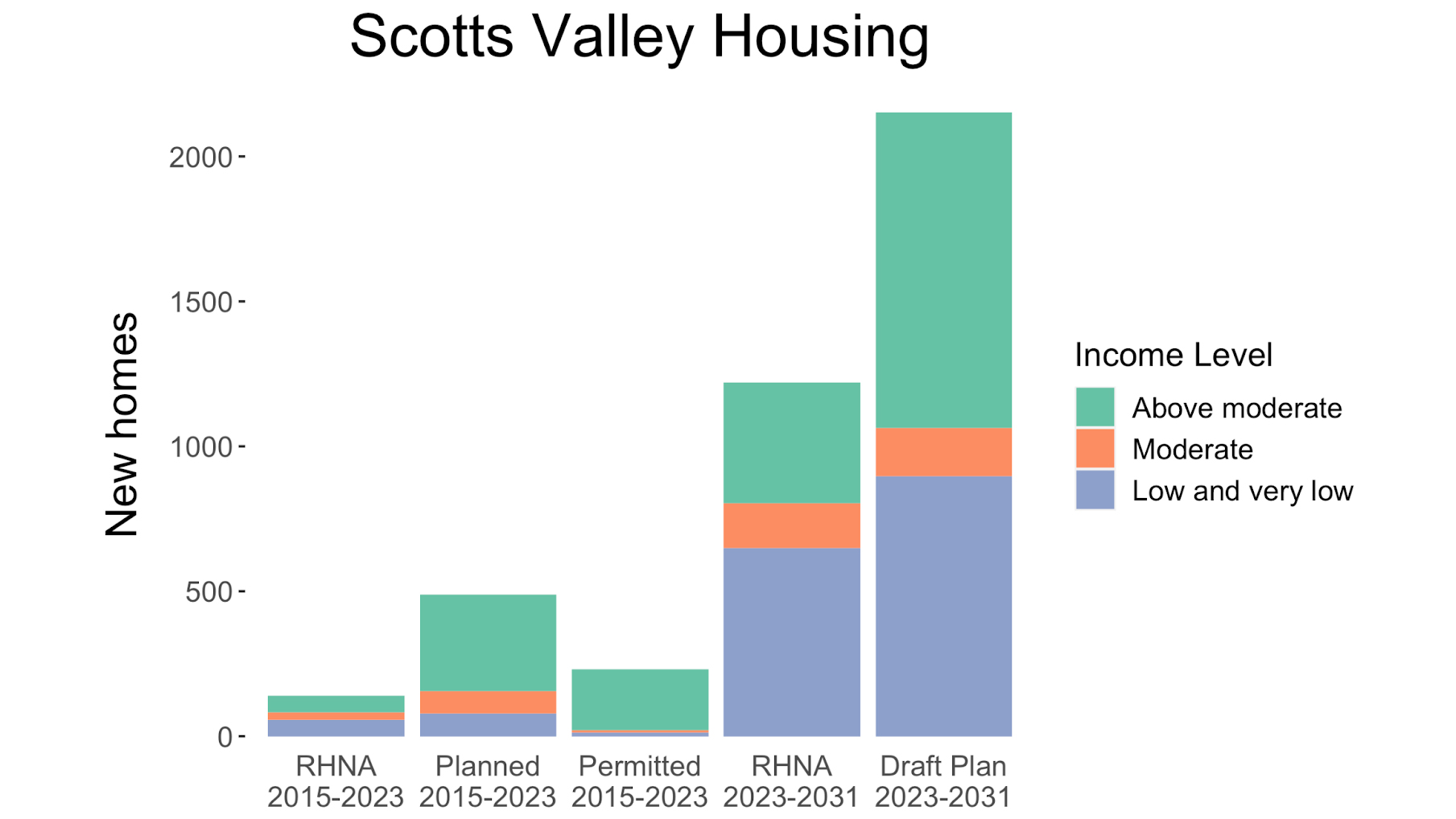
Monterey Bay’s Regional Housing Needs Allocation plan requires Scotts Valley to plan for at least 1,220 new homes by Dec. 15, 2031. The new goal is nearly nine times higher than the previous unmet target. From Jan. 1, 2015 through Dec. 31, 2022, Scotts Valley permitted 231 homes, 211 of which were market rate, shown in green. (City of Scotts Valley)
Town Center
About one-third of the draft plan’s new homes are slated for the Town Center, a 58-acre area between Mount Hermon Road and Bluebonnet Lane. City leaders adopted a plan to build housing on the site in 2008 but have made little progress.
The draft Housing Element includes 657 homes in the Town Center, more than twice as many as were planned for the site in the 2015 Housing Element.
The proposed project includes three pieces of city-owned land, the northern portion of the privately-owned Kings Shopping Center, and land owned by the Santa Cruz Metro Transit District.
Scotts Valley is in negotiations to buy pieces of the site owned by the City of Santa Cruz, said LaGoe. Buying those properties “is a key factor for us being able to actually build more units,” LaGoe said.
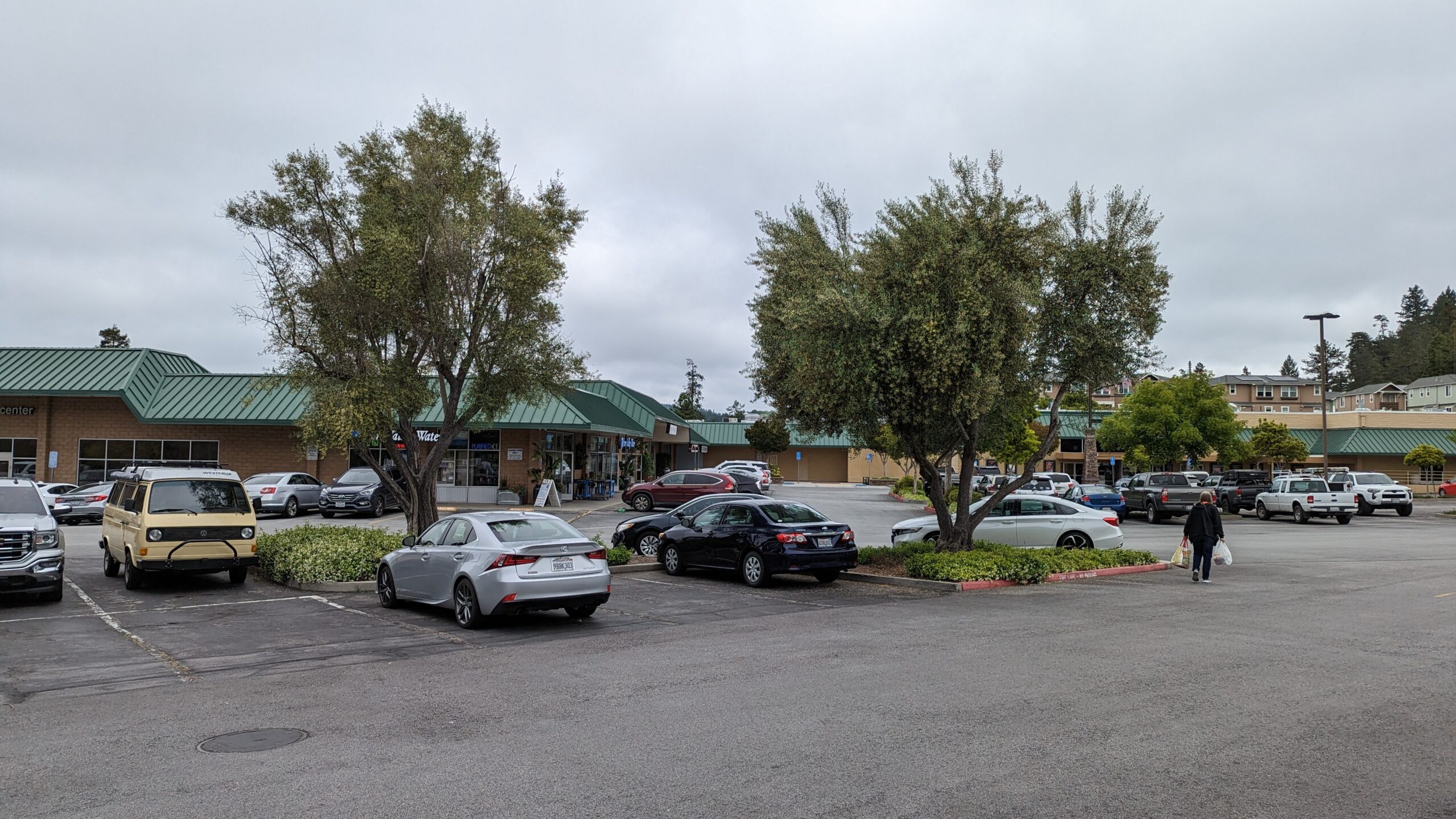
Areas of the Kings Village Shopping Center are expected to be rezoned for hundreds of new homes as part of the city’s draft Housing Element that was submitted to state authorities this week. (Stephen Baxter — Santa Cruz Local)
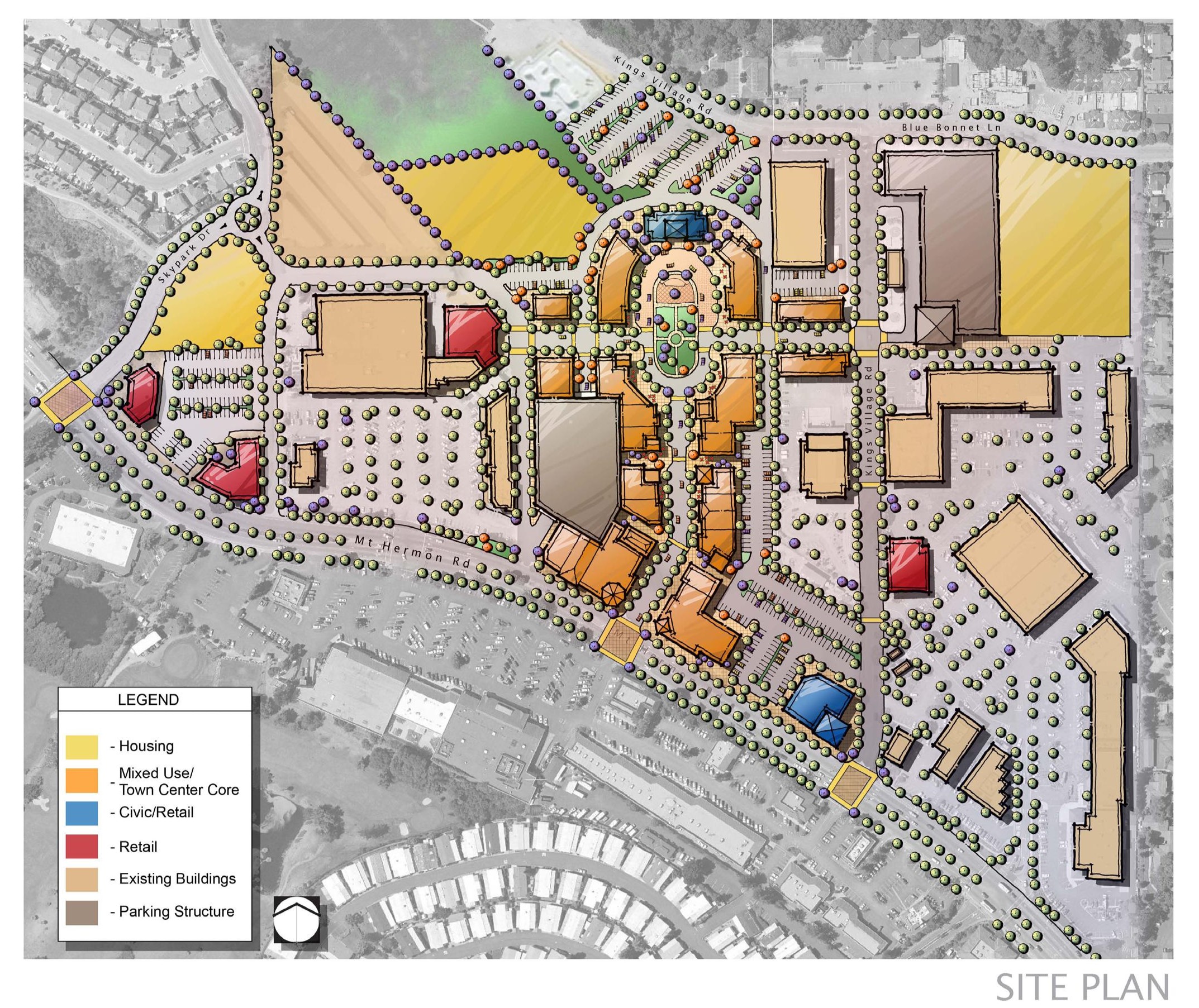
Scotts Valley’s Town Center Specific Plan from 2008 shows plans for housing in yellow and housing and commercial space in orange. The potential Town Center project is a key element of city leaders’ plans to permit more than 1,200 homes by 2031. (City of Scotts Valley)
Some affordable housing advocates said the city’s plan leans too much on the Town Center, given how long the project has been in the works without much progress.
Evan Siroky, founder of housing advocacy group Santa Cruz YIMBY, said the plans were “unrealistic.” City leaders don’t have a clear plan for how so many affordable units will be built, leaders of Santa Cruz YIMBY wrote in a statement. “It seems like the city’s just doing as little as possible,” Siroky said at the June 28 meeting.
LaGoe said the city is committed to making the project happen. Scotts Valley is working with the City of Santa Cruz to identify and deal with environmental contamination left from the site’s former use as an airport, which was a barrier to new developments in the past, she said. “We are trying to remove those barriers so that we can actually have a project come forward and get built,” she said.
Slow progress
Scotts Valley’s previous Housing Element included plans for 489 new homes, including 79 homes priced for low income residents.
From Jan. 1, 2015 through Dec. 31, 2022, the city permitted 231 homes, including 12 “low income” units, eight “moderate income” units and 211 market-rate units. No “very low income” units were permitted.
A June Santa Cruz County Civil Grand Jury Report stated that Scotts Valley “made almost no attempt to build housing for low income or extremely low income workers.”
The report recommended that the city:
- Show “significant progress” toward planning new mixed-use projects by the end of 2023.
- Create a plan to work with other municipalities, nonprofits and for-profit agencies to develop low income housing by the end of 2023.
During the June 28 meeting, Scotts Valley Mayor Jack Dilles said it was difficult for the city to meet state housing goals without raising money through redevelopment agencies. Redevelopment agencies used a portion of property taxes for urban renewal projects, including 100% affordable housing projects. The state dissolved redevelopment agencies in 2012.
Without a redevelopment agency, Scotts Valley depends largely on private developers to produce new housing, said LaGoe. In part of the city, new developments must include 15% affordable units. The draft Housing Element calls for the city to expand the requirement citywide.
City council members began talk of expansion of the 15% affordability rule in 2020, but the law update was delayed.
Scotts Valley’s affordability requirement makes meeting state housing goals difficult, LaGoe said. Developers have argued that the small scale of most Scotts Valley housing projects means higher rates of affordable units aren’t economically possible, she said. “You try to get a higher number, and then they just say, ‘Well then, the whole project is dead’,” she said.
Negotiating with developers in Scotts Valley is more difficult than in places with larger projects like the City of Santa Cruz, LaGoe said. “Some cities are more in the driver’s seat,” she said. “Smaller cities like us are not, and we’re just sort of begging developers to build.”
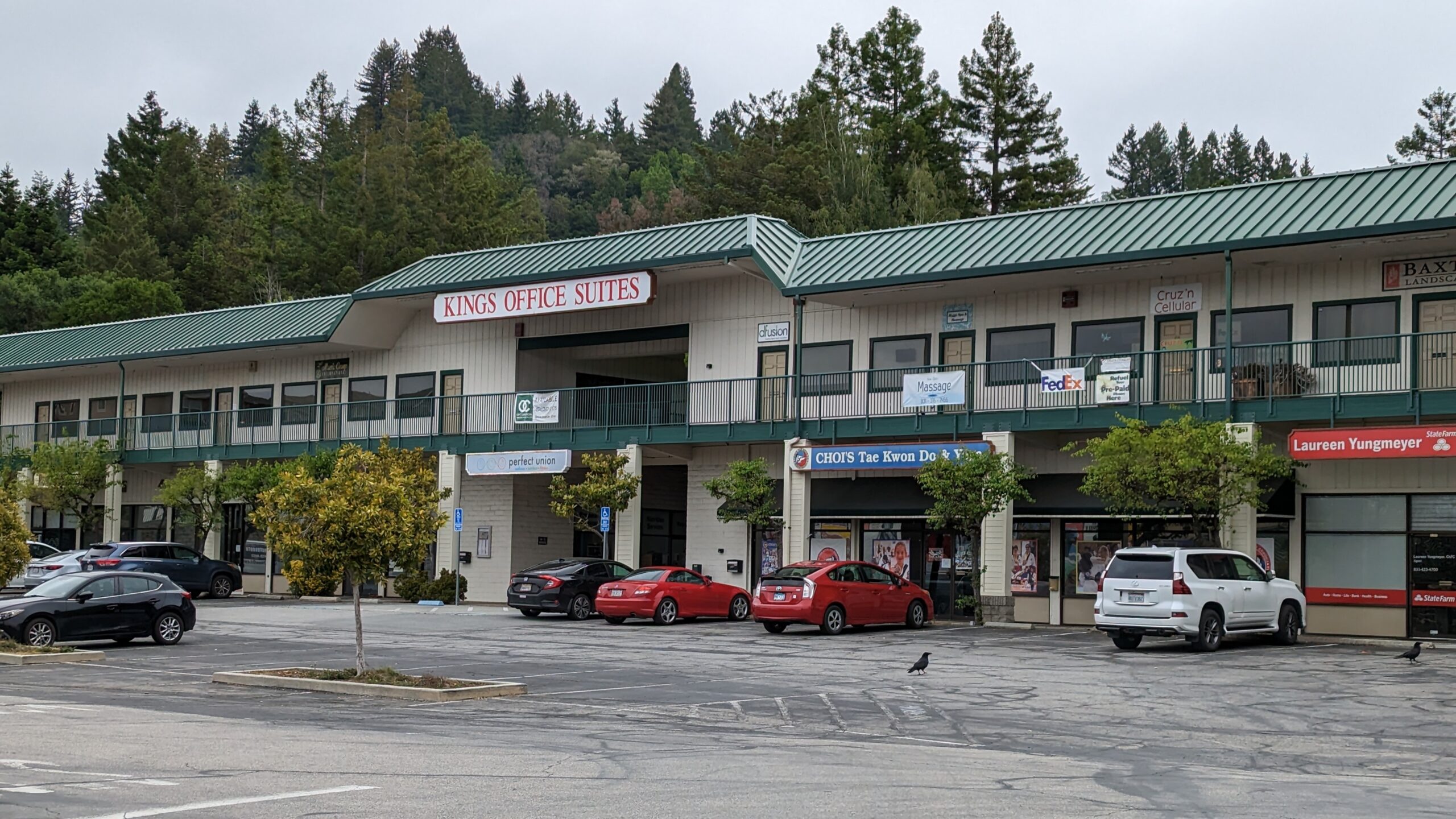
Part of the Kings Village Shopping Center would be developed into housing as part of Scotts Valley’s latest draft plan of the Housing Element. The plan includes zoning changes to allow for 657 new homes as part of the Town Center project. (Stephen Baxter — Santa Cruz Local)
Next steps
State authorities will have until Oct. 5 to review the Housing Element draft and provide comments, said Ines Galmiche, an urban planner with consultant Kimley-Horn, during the June meeting.
- The Scotts Valley City Council plans to hold a meeting in October to address those comments.
- City leaders plan to then submit a second draft, which the state may accept or give further comments.
- Once state authorities approve the draft, city leaders plan to hold adoption hearings and ratify the plan. The city must have an approved Housing Element by Dec. 15 to comply with state law.
Questions or comments? Email [email protected]. Santa Cruz Local is supported by members, major donors, sponsors and grants for the general support of our newsroom. Our news judgments are made independently and not on the basis of donor support. Learn more about Santa Cruz Local and how we are funded.
Jesse Kathan is a staff reporter for Santa Cruz Local through the California Local News Fellowship. They hold a master's degree in science communications from UC Santa Cruz.


